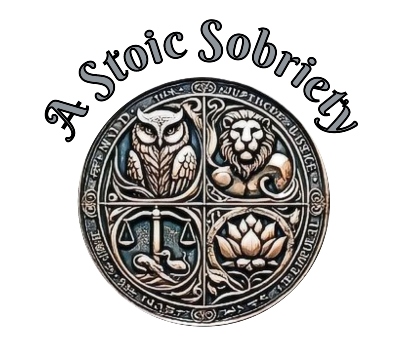Addiction Recovery: Crack the Code to Identifying and Managing Triggers
Do you want to crack the code to a lasting recovery? In the complex landscape of addiction recovery, triggers are the hidden landmines that can derail progress and send us back to old habits. It is critical that we can identify and defeat our triggers. This article guides understanding the subtle yet powerful cues that can challenge sobriety.
To that end, we will explore the nature of these emotional, environmental, and social triggers and provide practical strategies for neutralizing their influence. Whether we are recovery veterans or new to the process, learning to identify and manage these triggers is crucial for maintaining long-term sobriety.
Here is an official definition of the term trigger. Merriam-Webster defines “trigger” as both a noun and a verb. As a noun, it primarily refers to a mechanism, like a part of a gun, that initiates an action when activated.
As a verb, it means to cause an action or process to start . Additionally, the term “trigger” has evolved to include meanings related to causing a rapid or sudden action or response in various situations, such as medical symptoms or social interactions. As you can imagine, a trigger can be dangerous for a person with a substance disorder.
Recognizing Triggers
Now that we have an official trigger definition, it is time to crack the code. Identifying triggers before taking action requires awareness or mindfulness of our feelings. There is a pause between when we have a feeling and when we react to that feeling.
It is in this pause where the magic happens. We pause to think about what we are feeling, what it means, and what an appropriate response is. This is considered “the power of the pause,” a critical practice.
Triggers can take many forms, and they are personal. In this section, we will look at categories and examples, but it is up to each of us to dig deeper and understand our personal triggers.
Emotional Triggers: These include feelings such as anxiety, sadness, loneliness, frustration, or anger. Emotional triggers can also include positive states like feeling extremely happy or excited, which may lead us to want to celebrate with substances.
The simplest example is dealing with a stressful relationship, whether it be family, a significant other, coworkers, or your boss. We may have a big argument, and we feel unheard and wronged. We want to escape or numb the emotions that are bubbling up. A little voice may say, “A drink would help right now. “Hopefully, a recovery voice is ready and knows better.
If our temper drives us to react quickly, we need to focus on this character defect early and regularly. If we bypass the pause, we are putting ourselves at significant risk of acting inappropriately or even starting a series of thoughts that can lead to relapse.
In the next section, H.A.L.T. will be introduced as a handy tool for managing triggers. The middle two elements, Angry and Lonely, are also examples of emotional triggers in H.A.L.T.
Physical Triggers: These can involve fatigue, fear of harm, hunger, or pain. Our mind can have a powerful effect on our body and vice versa. When our body is in distress, it can cause our minds to pursue immediate relief that may come from rational or irrational thoughts and actions. In our effort to relieve uncomfortable feelings, we might revert to default behaviors and seek relief through substances.
We often hear the term H.A.L.T. in 12-step meetings. The bookends Hungry and Tired refer to physical triggers. It is worth delving more deeply into H.A.L.T. here, as it is a handy tool in your toolbox.
The acronym H.A.L.T. stands for Hungry, Angry, Lonely, and Tired. It’s used in 12-step programs like Alcoholics Anonymous (AA) to remind individuals in recovery to check in with themselves and address these basic needs to prevent actions we may regret or relapse.
Each component of H.A.L.T. represents a common trigger that can potentially lead to a craving or relapse if not managed properly:
Hungry: Physical hunger can affect mental state and decision-making, leading to irritability or poor choices. You might be familiar with the term “Hangry” used these days. Ensuring regular and nutritious meals can help stabilize mood and reduce cravings.
Angry: Unaddressed anger or unresolved conflicts can increase stress and might push us towards old habits as a coping mechanism. Learning how to manage anger and resolve conflicts healthily is crucial. There are many online resources to learn more about anger management and techniques for dealing with anger.
Lonely: Isolation can be a significant risk factor for relapse. Engaging with supportive friends, family, or fellow recovery group members can provide emotional support and decrease the urge to use substances.
Tired: Fatigue can lower one’s ability to cope with stress and impair judgment. Ensuring adequate rest is essential to maintain both physical and mental health.
In 12-step programs, members are encouraged to use H.A.L.T. as a simple and practical tool to self-assess their state and consciously take care of their well-being as part of ongoing recovery efforts. Addressing these fundamental needs can help individuals maintain sobriety by reducing the impact of these common triggers.
Environmental and Social Triggers: Specific locations, situations, drinking friends, or even times of the day can serve as cues. For example, passing by a bar one used to frequent, attending a social event where substances are present, or times of day associated with previous usage (like evenings or weekends).
The advice in AA to those early in recovery to change people, places, and things comes into play. The idea behind changing people, places, and things is to minimize exposure to possible triggers and maximize the chances for successful recovery. It’s about building a new life where old habits are replaced with healthier ones, facilitating long-term sobriety.
People and Places are straightforward, but things can also be important. This aspect covers removing or avoiding specific items that might serve as reminders of substance use. These could include paraphernalia, certain types of music, movies, or any personal items linked to past behaviors.
Psychological Triggers: These involve thoughts or thinking patterns that can induce cravings. This might include feelings of worthlessness, self-doubt, or memories associated with substance use. Ignorance or avoidance of one’s underlying psychological issues is often the root of substance abuse disease.
The 12 Steps in AA are a guide to identifying these root causes and addressing them. Many need additional support to work through their challenges. There is no shame in using any tool today to improve mental state.
Recognizing triggers marks the initial stride toward empowerment in recovery. As long as we work to pinpoint areas where we may be at risk, we can help neutralize the dangers.
Overcoming Triggers
Now that you know what triggers may exist and in what forms, it is time to crack the code. It is often beneficial to put together a plan. A plan may involve steering clear of triggering environments, establishing a robust support network, and cultivating healthy coping mechanisms. As part of that plan, we can use many different tools to defeat triggers when they present themselves.
One practical approach to battling triggers is cognitive-behavioral therapy (CBT). CBT is a therapy process that helps individuals identify and challenge distorted thought patterns. It helps us learn to reframe negative thoughts and beliefs associated with triggers, empowering us to address our triggers constructively.
One of the most powerful tools in our efforts to overcome our triggers is practicing mindfulness. Mindfulness techniques include mindfulness meditation, walking meditation, and deep breathing exercises.
With mindfulness, we are focused only on the present moment. We can observe our thoughts and cravings without judgment. It allows us to clear all the other noise in our lives and focus on what we face right now. This allows us to analyze and respond to triggers with a clear mind.
A critical part of recovery is developing a supportive network of others, such as friends and family members, who can offer assistance when facing challenging situations.
Connecting with fellow travelers on the recovery path provides encouragement, accountability, and practical advice. Twelve-step meetings provide a safe place for us to share experiences, gain insights, and draw strength from one another.
Lastly, self-care emerges as another critical facet of trigger management in recovery. Self-care involves activities that contribute to physical, emotional, and spiritual well-being. Regular exercise, balanced nutrition, sufficient sleep, and hobbies or interests can greatly enhance one’s recovery. By practicing self-care, we build resilience and reduce the chances of a relapse.
Managing triggers is a continuous process regardless of whether we have 24 hours or many years of sobriety. Recovery rarely follows a straight line. Life has many ups and downs, and each can provide the opportunity for a slip in our recovery.
Conclusion
As we can now see, identifying and addressing triggers is not a luxury for us dedicated to recovery from addiction. To manage them effectively, we must practice self-awareness, prepare as much as possible, and seek support when needed.
Using the tools in this article and others that help us, we set ourselves up for success as we build our resilience and determination to stay sober. To crack the code, we must confront triggers head-on and master proactive responses to achieve enduring sobriety and reclaim control of our lives.
Resources
What are Triggers Video – Addiction Center
External Trigger Questionnaire -ONODC.Org




Very interesting. Keeps me thinking about how we think and process info